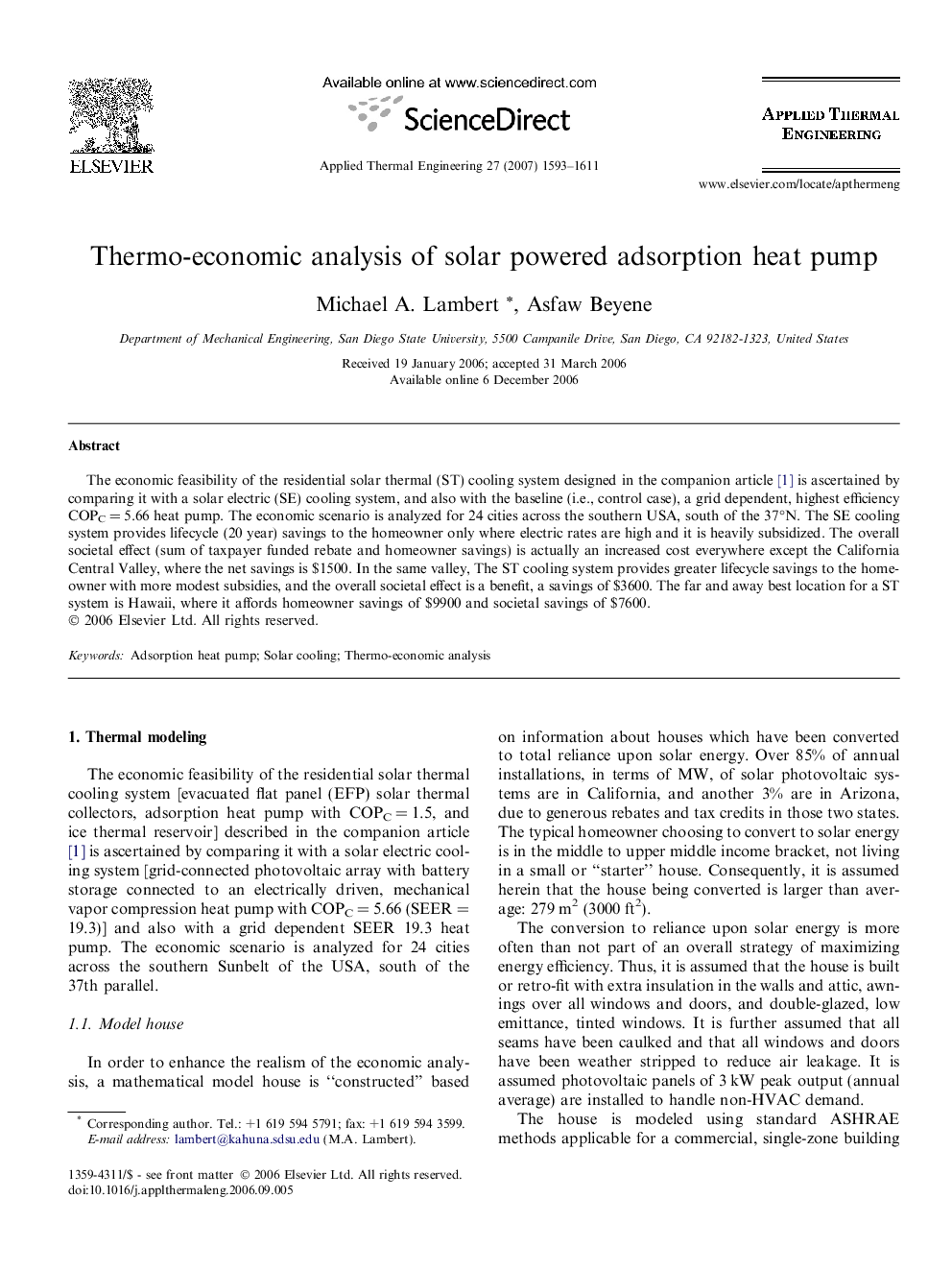| Article ID | Journal | Published Year | Pages | File Type |
|---|---|---|---|---|
| 649449 | Applied Thermal Engineering | 2007 | 19 Pages |
The economic feasibility of the residential solar thermal (ST) cooling system designed in the companion article [1] is ascertained by comparing it with a solar electric (SE) cooling system, and also with the baseline (i.e., control case), a grid dependent, highest efficiency COPC = 5.66 heat pump. The economic scenario is analyzed for 24 cities across the southern USA, south of the 37°N. The SE cooling system provides lifecycle (20 year) savings to the homeowner only where electric rates are high and it is heavily subsidized. The overall societal effect (sum of taxpayer funded rebate and homeowner savings) is actually an increased cost everywhere except the California Central Valley, where the net savings is $1500. In the same valley, The ST cooling system provides greater lifecycle savings to the homeowner with more modest subsidies, and the overall societal effect is a benefit, a savings of $3600. The far and away best location for a ST system is Hawaii, where it affords homeowner savings of $9900 and societal savings of $7600.
